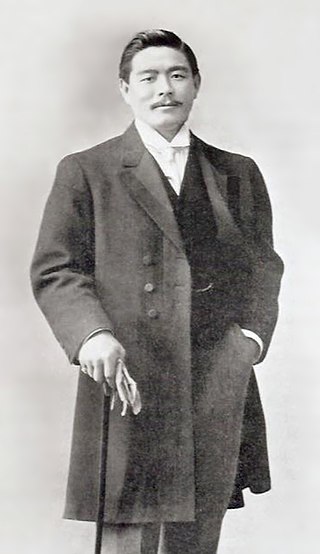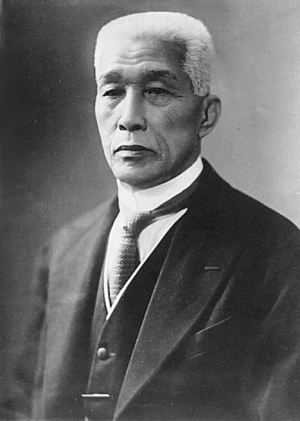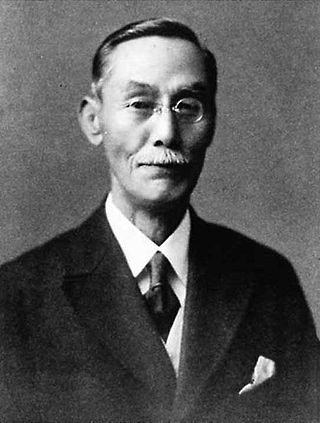Related Research Articles

Judo is an unarmed modern Japanese martial art, combat sport, Olympic sport, and the most prominent form of jacket wrestling competed internationally. Judo was created in 1882 by Kanō Jigorō as an eclectic martial art, distinguishing itself from its predecessors due to an emphasis on "randori" instead of kata alongside its removal of striking and weapon training elements. Judo rose to prominence for its dominance over established jujutsu schools in tournaments hosted by the Tokyo Metropolitan Police Department, resulting in its adoption as the department's primary martial art. A judo practitioner is called a "judoka", and the judo uniform is called "judogi".

Keiko Fukuda was a Japanese-American martial artist. She was the highest-ranked female judoka in history, holding the rank of 9th dan from the Kodokan (2006), and 10th dan from USA Judo and from the United States Judo Federation (USJF), and was the last surviving student of Kanō Jigorō, founder of judo. She was a renowned pioneer of women's judo, and in 1972 together with her senpai Masako Noritomi (1913–1982) was one of the first two women promoted to 6th dan. In 2006, the Kodokan promoted Fukuda to 9th dan, making her the first woman to hold this rank from any recognized judo organization. She is also the first and, so far, only woman to have been promoted to 10th dan in judo, which occurred in 2011. After completing her formal education in Japan, Fukuda visited the United States to teach in the 1950s and 1960s, and eventually settled there. She continued to teach her art in the San Francisco Bay Area until her death in 2013.

Sambo is a combat sport, and a recognized style of amateur wrestling governed by the UWW in the World Wrestling Championships along with Graeco-Roman wrestling and freestyle wrestling. Practiced worldwide, sambo is a martial art with Soviet origins. Many of its moves have been incorporated in other forms of combat sport such as mixed martial arts.

Mitsuyo Maeda naturalized as Otávio Maeda, was a Japanese-born Brazilian judōka and prizefighter in no holds barred competitions. He was known as Count Combat or Conde Koma in Spanish and Portuguese, a nickname he picked up in Spain in 1908. Along with Antônio Soshihiro Satake, he pioneered judo in Brazil, the United Kingdom, and other countries.
James A. Pedro is an American retired World Champion and Olympic judoka, as well as a current judo coach. Pedro currently holds a 7th degree black belt in judo. He is the coach of Kayla Harrison, the first and currently only American to win an Olympic gold medal in judo.

Gokor Grigor Chivichyan is an Armenian-American martial artist and trainer in judo, submission grappling, and mixed martial arts. Chivichyan currently trains professional and amateur athletes at Hayastan MMA Academy in North Hollywood, California, United States.

Jason Newth Morris is an American retired judoka. He was a four-time Olympian and 2008 Olympic Coach, best known for winning the silver medal in the –78 kg weight category in the 1992 Summer Olympics and a Bronze Medal in the 1993 World Judo Championships. He is a Hachidan his favorite techniques are Uchi Mata, Tai Otoshi, and his "Sticker or Sticky Foot". He was also an NCAA Division I All-American wrestler and 2x EIWA conference champion at Syracuse University.

Kanō Jigorō was a Japanese judoka, educator, politician, and the founder of judo. Judo was one of the first Japanese martial arts to gain widespread international recognition, and the first to become an official Olympic sport. Pedagogical innovations attributed to Kanō include the use of black and white belts, and the introduction of dan ranking to show the relative ranking among members of a martial art style. Well-known mottoes attributed to Kanō include "maximum efficiency minimal effort" and "mutual welfare and benefit".

Yamashita Yoshitsugu, also known as Yamashita Yoshiaki, was a Japanese judoka. He was the first person to have been awarded 10th degree red belt (jūdan) rank in Kodokan judo, although posthumously. He was also one of the Four Guardians of the Kodokan, and a pioneer of judo in the United States.
Yoshisada Yonezuka, was a Judo instructor and two time U.S. Olympic Judo Team coach.

Kayla Jean Harrison is an American professional mixed martial artist and former judoka. She currently competes in the women's Bantamweight division of the Ultimate Fighting Championship (UFC). She was the former Professional Fighters League lightweight champion. As of October 8, 2024, she is #2 in the UFC women's bantamweight rankings, and as of November 5, 2024, she is #7 in the UFC women's pound-for-pound rankings.

Tomita Tsunejirō, born Yamada Tsunejirō, was the earliest disciple of judo. His name appears in the first line of the enrollment book of the Kōdōkan. Tomita, together with Saigō Shirō, became the first in the history of judo to be awarded the rank of Shodan by the founder of judo, Kanō Jigorō, who established the ranking system that is now commonly used in various martial arts around the world. Tomita was known as one of the "Four Kings" of Kōdōkan judo for his victorious efforts in competing against jujitsu schools. He was awarded 7th dan upon his death on January 13, 1937.
In judo, improvement and understanding of the art is denoted by a system of rankings split into kyū and dan grades. These are indicated with various systems of coloured belts, with the black belt indicating a practitioner who has attained a certain level of competence.

Sumiyuki Kotani was a Japanese martial artist. He was a member of the 1932 Japanese Olympic wrestling team. He was one of the highest-ranked judoka, and was awarded a 10th dan in April 1984 by the Kodokan. He was for a long time the oldest 10th dan until Ichiro Abe was awarded the rank age of 83 years. Kotani studied at the Tokyo College of Education and studied judo directly under Jigoro Kano. As a young man, he was known to take on any challenges. Kotani was very active in promoting judo throughout the world and was the director of the international division at the Kodokan for many years. He was also a professor at Tokai University. He was the Kodokan's top representative and vice president of the All Japan Judo Federation. He died on October 19, 1991.
James Takemori was an American judoka and World War II veteran.

Ichiro Hatta was a Japanese judoka and wrestler. He was instrumental in founding the Japanese Amateur Wrestling Association and bringing the 1964 Olympics to Japan.
Yoshito Vince Tamura was a former international competitor in judo.
Roy Moore (1893-1980) was a wrestling and judo coach, best known for instituting the weight class system in judo. Moore was trained by Frank Gotch. He earned the World Wrestling Championship title in Chicago beating judoka and wrestler Manjiro "Matty" Matsuda. Matsuda later became his judo coach. Moore earned a fifth degree black belt in judo. He later joined the US Navy.
References
- ↑ "Five Facts about the 1879 Encounter Between Ulysses S. Grant and Kano Jigoro". martialhistoryteam.blogspot.com/. Retrieved 2023-09-15.
- ↑ Inc, Active Interest Media (1 May 1977). "Black Belt". Active Interest Media, Inc. – via Google Books.
{{cite web}}:|last=has generic name (help) - ↑ Lee, Jonathan H. X.; Nadeau, Kathleen M. (1 January 2011). Encyclopedia of Asian American Folklore and Folklife. ABC-CLIO. ISBN 9780313350665 . Retrieved 11 October 2016– via Google Books.
- ↑ "Theodore Roosevelt: Mojo in the Dojo". Mental Floss. 12 September 2021.
- ↑ Ling, Huping; Austin, Allan W. (17 March 2015). Asian American History and Culture: An Encyclopedia. Routledge. ISBN 9781317476450 . Retrieved 11 October 2016– via Google Books.
- ↑ "Is Ronda Rousey the savior judo has been waiting for?". MMAjunkie. 2 July 2014. Retrieved 11 January 2015.
- ↑ Mihoces, Gary (8 March 2012). "U.S. judo making move to become powerhouse after medal grab". usatoday.com. Retrieved 8 April 2014.
- ↑ Perrotta, Tom (19 July 2016). "How an American Took Down Judo" . Retrieved 11 October 2016– via Wall Street Journal.
- ↑ Carpenter, Les (11 August 2016). "USA's Kayla Harrison wins second straight Olympic judo gold". The Guardian. Retrieved 11 October 2016.
- ↑ "Jimmy Pedro and his dad: Guardians at USA Judo gate | Sports". newburyportnews.com. 2016-08-14. Retrieved 2016-08-17.